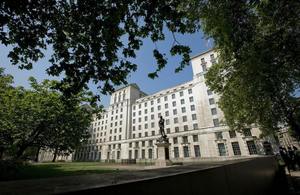Soldier who saved Afghan child's life receives bravery award
An Army engineer who risked his life to help the casualties after an Afghan minibus hit a roadside bomb, saving a child who lost a leg in the explosion, has been awarded the Queen's Commendation for Bravery.

Sapper Ryan Pavey, aged 24, was the lead explosive ordnance disposal searcher for a team tasked with clearing the infamous Route 611 of improvised explosive devices (IEDs) when the civilian minibus bypassed the military cordon which had been set up to stop vehicles while they worked.
The minibus then triggered a large IED which had been planted at the side of the road less than 100 metres away. Eighteen civilians were killed outright, the majority of them women and young children. Five others were critically injured including a four-year-old boy.
IEDs planted along the road had already destroyed two heavily armoured vehicles in the past two weeks alone, and the risk of further devices amid the carnage of the explosion was high.
Sapper Pavey immediately switched his focus to clearing a safe route to the survivors. Time was of the essence but he could not risk more devices being activated by letting everyone run to the minibus:
I heard the explosion, and when I saw what had happened I just turned to start clearing towards the casualties. Your senses get heightened as obviously there is a lot going through your mind but you have to keep focused.
You want to get there as fast as possible but you have to work safely rather than just quickly and risk further injuries.
His citation says:
Drawing on raw courage and resolve, Pavey led the team towards the survivors, constantly adjusting his assessment of the extraordinary real threat underfoot. This demanded nerves of steel, a cool head and clear focus. The heavy burden of avoiding any IEDs was his alone to bear.
His progress was made all the more difficult by the fragments and metal remnants of the minibus covering the area which gave false readings on his metal detector as he searched for more hidden deadly devices.
As he reached the casualties he immediately started to give treatment, in particular to the four-year-old boy whose leg had been amputated in the blast.
His citation says:
As the first responder, Pavey’s treatment was outstanding, stemming the bleed, reassuring the boy, and extracting him to a waiting Afghan Police vehicle for evacuation; without doubt saving the boy’s life.
Sapper Pavey, who was on his second tour of Afghanistan, admits that the carnage of the blast was the worst he had ever seen:
It is harder when the casualties are civilian,” he said. “When you deploy you have to ready yourself for the possibility of soldiers being injured, but seeing a child hurt is a lot harder than seeing a grown-up.
But your training takes over and you just focus on where they are injured and what you can do to help them,” added Sapper Pavey who also deployed to Afghanistan in 2009.
His citation concludes:
Pavey’s conduct was extraordinary, placing himself in harm’s way to assist the badly wounded and traumatised survivors. This horrific incident represents only one of many examples of his persistent courage over six psychologically-gruelling months. The demands on him have been relentless and daunting. His conduct has been humbling.
The Queen’s Commendation for Bravery is awarded for bravery that involves risk to life and merits national recognition. It is denoted by a silver spray of laurel leaves.
The announcement was made on Friday 28 September with the release of the latest Operational Honours and Awards List which includes some 106 personnel. The awards are for actions taken during the period of Operation HERRICK 15 from 1 October 2011 to 31 March 2012. See Related News.